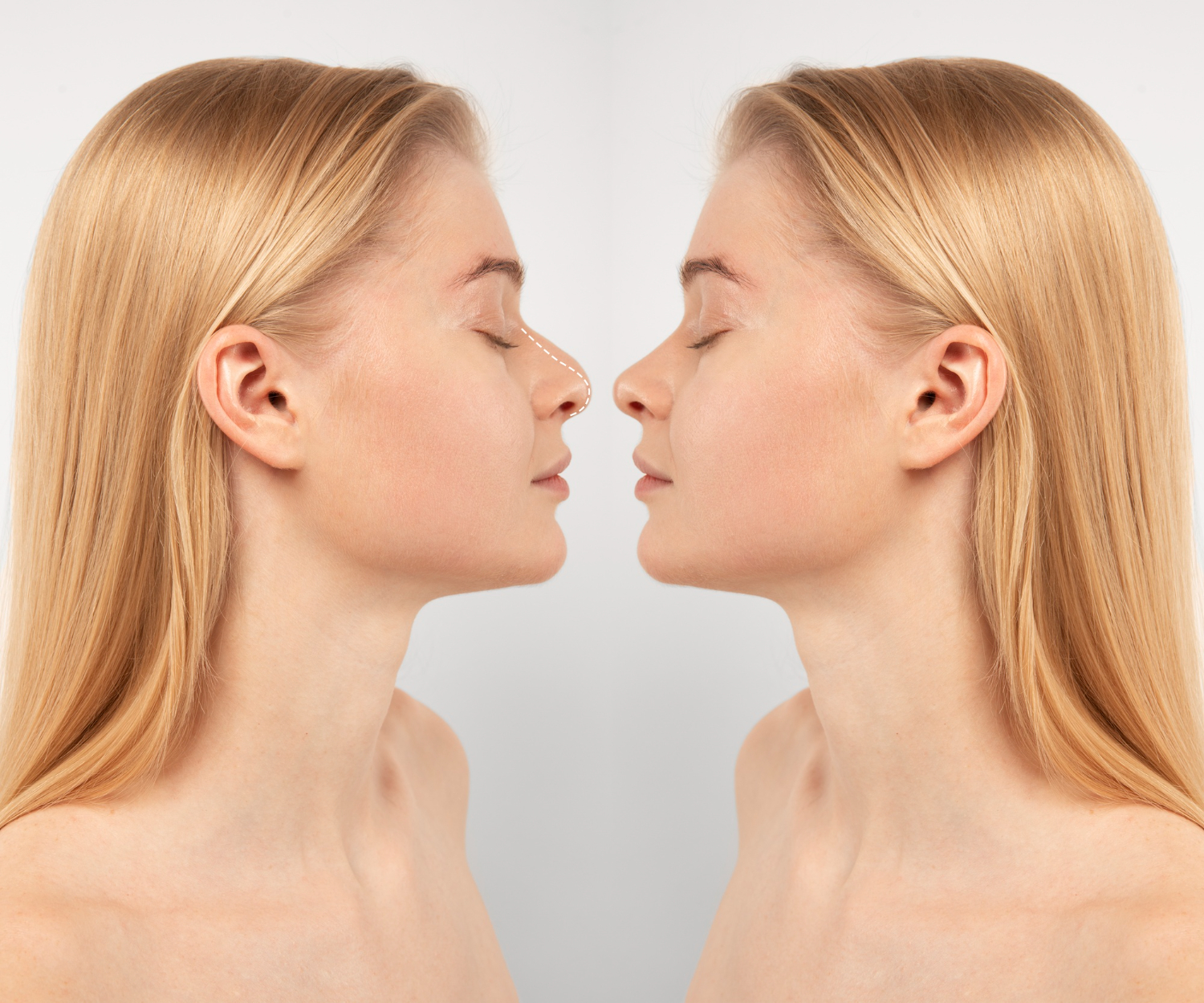
Rhinoplasty
7/5/2024 4:33:34 PMWhat is Rhinoplasty?
Rhinoplasty is a surgical procedure performed to alter the shape and/or function of the nose. It can be carried out for cosmetic enhancement or functional improvement. Cosmetic rhinoplasty aims to improve the external appearance of the nose, while functional rhinoplasty is performed to address health issues such as nasal obstruction.
Types of Rhinoplasty
-
Cosmetic Rhinoplasty
- Purpose: To aesthetically improve the shape, size, or profile of the nose. This includes procedures like lifting the nasal tip, correcting the nasal bridge, or reducing the size of the nostrils.
- Procedure: The surgeon reshapes the nasal structures (bone and cartilage) to achieve the desired external appearance of the nose.
-
Functional Rhinoplasty
- Purpose: To correct functional issues such as nasal obstruction, deviated septum, or sinusitis. It addresses problems within the nasal structures.
- Procedure: Anatomical structures inside the nose are corrected, and issues obstructing airflow are resolved.
-
Reconstructive Rhinoplasty
- Purpose: To repair damage caused by trauma, congenital deformities, or diseases affecting the nose.
- Procedure: The nasal structure is rebuilt to provide both aesthetic and functional improvements.
Rhinoplasty Procedure
- Preparation: A pre-operative assessment is conducted to determine the nasal structure and desired changes. The surgeon creates a detailed plan.
- Anesthesia: General or local anesthesia may be used. Cosmetic rhinoplasty is usually performed under general anesthesia.
- Surgery: Incisions are made either inside or outside the nose to reshape the nasal structure. Cartilage and bone tissues are corrected.
- Recovery: Tampons are placed inside the nose after surgery, and the healing process begins. Swelling and bruising are common and typically resolve within a few weeks.
Rhinoplasty Recovery Timeline
- First Few Days: Swelling and bruising may occur. Mild pain and discomfort in the nasal area are possible.
- First Week: Tampons and bandages are usually removed within the first week. The nose may be very sensitive during this period.
- Two Weeks: Swelling starts to decrease. Return to work and social activities is possible, but pressure on the nose should be avoided.
- Two Months: Swelling significantly subsides. The shape of the nose gradually becomes clearer.
- Six Months to One Year: Final results are typically seen between six months to one year. Changes in the nasal structure settle over time.
Risks and Side Effects of Rhinoplasty
- Surgical Risks: Infection, bleeding, and anesthesia-related complications.
- Scarring: Incisions inside the nose are usually not visible, but external incisions may leave scars.
- Swelling and Bruising: Swelling and bruising are normal after surgery and decrease over time.
- Functional Issues: In rare cases, nasal obstruction or breathing problems may occur.
Why Consider Rhinoplasty?
Rhinoplasty is an effective surgical procedure for improving both the appearance and function of the nose. It offers significant benefits for both cosmetic and health reasons. It is crucial to understand the risks and benefits of the procedure before surgery and consult with an experienced plastic surgeon to achieve the best results. If you are considering rhinoplasty, consulting with a healthcare professional to develop a plan tailored to your needs is advisable.
